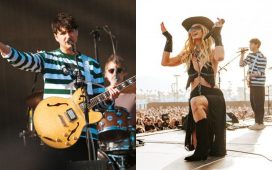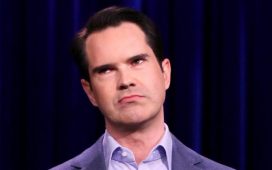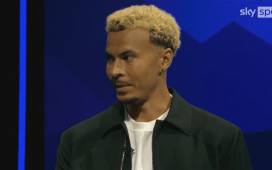Aides saw plans to introduce prime minister to a ‘pop star’ during electioneering visit to Abbey Road studios thwarted by security rules
Security rules thwarted a plan for Margaret Thatcher to boost her popularity by meeting pop star Kate Bush at the Abbey Road music studios – leaving the Iron Lady to settle instead for a lively chat with the composer of the Wombles theme tune.
Documents from Mrs Thatcher’s personal archive highlight the perils of mixing prime ministers with popular culture after Downing Street advisers sought to raise her profile during her troubled final months in office.
Aides decided early in 1990 that a visit to the famous EMI recording studios in north London, immortalised in musical history by their association with figures from the Beatles to Elgar, would be useful in improving Mrs Thatcher’s standing in the arts.
But the papers released by the Margaret Thatcher Foundation reveal that the project proved a headache for Number 10 from its earliest stages.
Hoax
Initial attempts by Mrs Thatcher’s private secretary, Caroline Slocock, to contact the studios were rebuffed after the general manager decided her call could only be a hoax.
After eventually establishing her bona fides, Ms Slocock suggested to the studios that the prime minister was interested “to meet a ‘pop star’”. The answer that Kate Bush might be available, along possibly with former The Who frontman Roger Daltrey, was greeted with enthusiasm by Downing Street.
However, it soon became clear that stringent security rules, which meant the identity of the VIP visitor could not be revealed to the stars who were being asked to alter their recording schedules, would result in no takers from the musical elite for a meeting with Mrs Thatcher.
Facilities
Ms Slocock wrote: “The studio feel that, as the artists recording on the day of the visiting are paying for the facilities, they need to be told in advance that their work is going to be interrupted. I have said that any notice should be kept to the minimum and should only talk in general terms about a VIP visit.”
Instead, arrangements were made for an introduction to the only other established recording artist due at Abbey Road on the appointed day – Mike Batt, composer of the well-loved theme tune to the revered children’s television programme, the Wombles.
Aides do not seem to have been confident that the prime minister would understand who she was meeting and provided a memo for Mrs Thatcher explaining just who the Wombles were and offering a sample of Mr Batt’s famous “Underground, overground, wombling free” lyrics.
Drums
The eventual visit appears to have gone tolerably well with Mrs Thatcher overcoming her objection that being photographed playing a set of drums once used by Ringo Starr would be “too gimmicky”. The prime minister also submitted to her aides’ request to please the cameras by re-creating the famous zebra crossing picture of the Beatles, albeit walking across the road in the opposite direction.
In an effusive subsequent letter to Downing Street, Mr Batt, who turned out to be an ardent supporter of the prime minister, thanked Mrs Thatcher for their discussion on the travails of the music industry and suggested a further meeting.
A reply from Downing Street said that while the prime minister had been “impressed” with the points raised, the Number 10 diary meant there was “no immediate opportunity” for a meeting.
Dress code: Diary reveals the secrets of Thatcher’s prime ministerial wardrobe
They could be code words for the most secret operations of the British state – “Navy Gorbachev”, “Purple Budapest”, “Venice II”. Instead, these words written in a Number 10 diary denote a more public geo-political calling card – Margaret Thatcher’s wardrobe.
The importance of clothing to the former prime minister, and the attention paid to the detail of what she wore on the public stage, is revealed in the meticulous clothes diary kept in 1990 by her assistants chronicling her outfit choices for events from royal audiences to train journeys.
While her male predecessors and successors were able to wear pretty much what they wanted without comment, Mrs Thatcher, like other women in politics, was subjected to a more enduringly sexist regime of scrutiny.
Political identity
It was a situation which she sought to turn to her advantage, making her sartorial choices – in particular the famous handbag – part of her political identity from the outset.
By her last year in office, the Downing Street wardrobe operation was at its peak, with particular outfits being named after the first occasion on which they were worn.
Hence “Navy Gorbachev”, along with its close relative the “Pink Chanel Gorbachev”, denoted one of the combinations first won by Mrs Thatcher during a key visit to Moscow in 1987 to meet Soviet leader Mikhail Gorbachev as the Cold War began to thaw.
‘Wogan Short’
Among the more frequent and surprising entries are references to “Wogan Long” and “Wogan Short” – a nod to outfits worn during her interviews with broadcaster Terry Wogan.
Chris Collins, historian at the Margaret Thatcher Foundation, which is publishing the clothes diary as part of its final tranche of regular releases from its archive of her personal papers, said that by the end of her time in office the Iron Lady had become something of a devotee of a fashion and its ability to project her image.
He said: “She suddenly, I think, is aware of the power of clothes… After leaving Number 10 [there] was a very big room and it was full of clothing racks, and all of the clothes had their own zipped up bags with the names on.
“She knew every one. They were lovingly looked after. And they were just a great joy to her. I mean she loved the clothes, thinking about the clothes, changing clothes and just arranging it all.”
Disapproval
Indeed, such was Mrs Thatcher’s interest in what she wore, it seems the naming of her preferred outfits became a way of expressing approval or disapproval.
While the likes of Ronald Reagan, Mr Gorbachev and Mr Wogan were immortalised in the prime ministerial wardrobe, other figures such as German chancellor Helmut Kohl, US president George Bush and French president Francois Mitterand were frozen out of sartorial history.
Mr Collins said: “She chose to name a dress when she met President Mitterand at Waddesdon Park in May 1990. But she named it Waddesdon rather than Mitterand. Only certain men got the accolade of having a dress named after them.”













